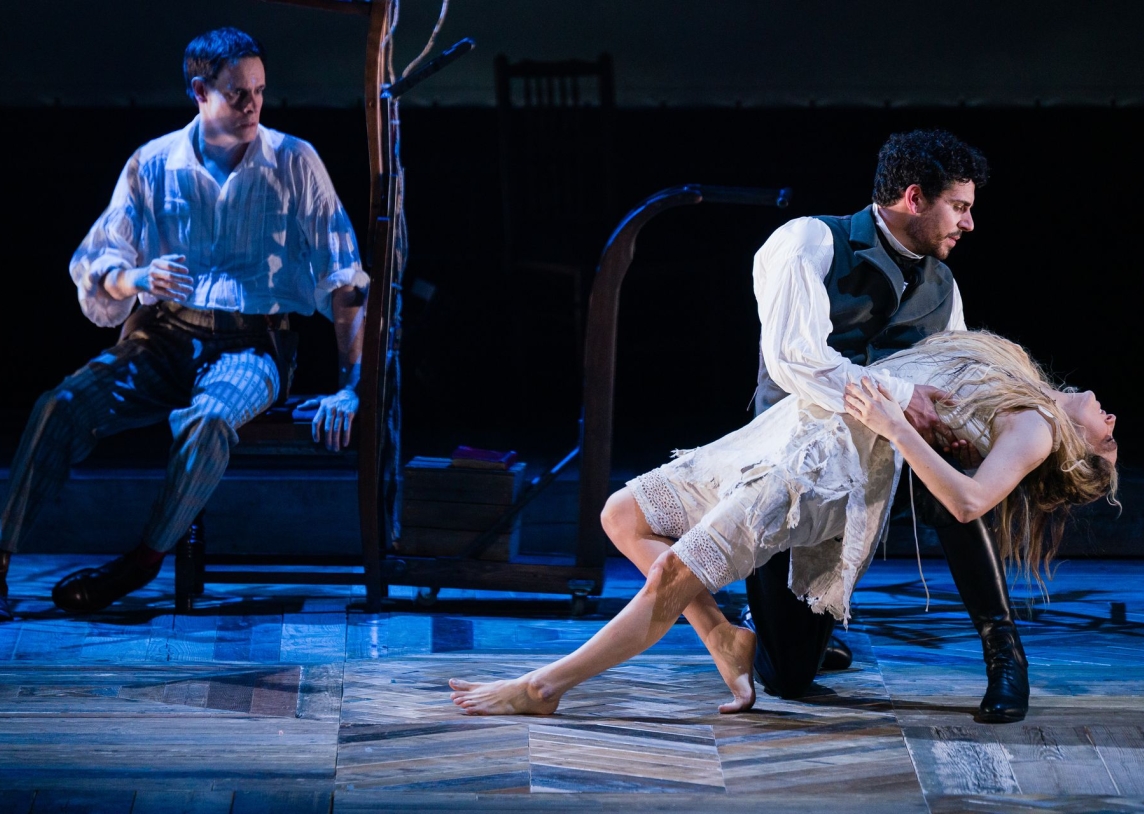News
Wuthering Heights
Based on the novel by Charlotte Bronte, directed and adapted by Emma Rice, and produced by Wise Children, The National Theatre, Bristol Old Vic and York Theatre Royal, the credits for Wuthering Heights are as busy and extensive as the show’s theatricality, which takes Brecht’s ‘total theatre’ to mean the incorporation of multiple genres and styles. Physical theatre and dance are returned to their Athenian roots through a chorus representing the ragged moor, projections promise blue skies and deliver ominous flights of birds above a stage packed with mobile scenery that can be placed at the service of various locations. There are puppets, there are actors cast with an eye to their identity (Lucy McCormick, performance art’s Triple Threat brings her wild persona to an endearing yet deadly Cathy), while the frenetic pace, flashbacks and ensemble’s switching of roles lends Wuthering Heights a ferocity that belies the complexity of its plot and thematic intensity.
The use of puppetry – for dogs and children - is a familiar trope in what dramaturge Elliot Roberts has called the ‘high English touring style’ (a form which was invented by Rice and adapted by several British companies). It is merely an element amongst elements, an additional feature rather than an essential aspect to the total vision. Nevertheless, it is telling that it resolves the problem of presenting things on stage (the young and the feral) that can be a problem. Beyond this, it confirms the dynamism of the production: the dog, reduced to a skull on a lead, can be ferocious and humorous while Heathcliff’s mannequin is far more charming than his striding, arrogant adult self.
Whether the use of the puppet as an enhanced prop for the inarticulate speaks to British traditions of puppetry (in so far as it often appears in work orientated towards children), they certainly emphasise the sense of powerless both for the puppets themselves and the human performers. Wuthering Heights, which combines theatrical spectacle with direct storytelling, places its protagonist at the mercy of external voices: Heathcliff is little more than a puppet himself, driven by social pressures and a disempowering desire. An all puppet version would make this all the more explicit, but the guest appearance of inanimate bodies hints at a larger design.
Rice’s total-theatre is overpowering, hinting at the racism within Bronte’s novel and mixing comedy, tragedy, melodrama and multiple other genres that are sucked into its whirling tornado of dramaturgy. Feisty and fickle, restless and potent, like Cathy herself, Wuthering Heights celebrates the potency of theatricality.
Gareth K. Vile

